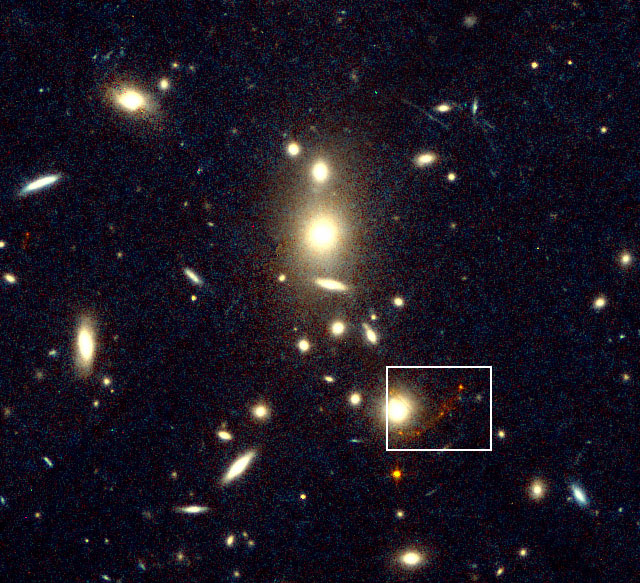
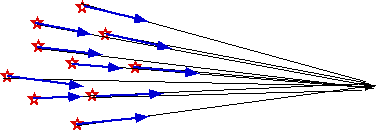
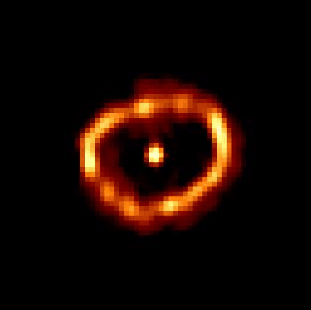
Nova Cygni 1992 Credit: NASA, ESA, HST, F. Paresce, R. Jedrzejewski (STScI)
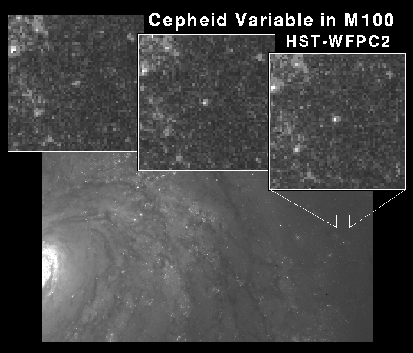
Credit: NASA, HST, W. Freedman (CIW), R. Kennicutt (U. Arizona), J. Mould (ANU)
Distances to Galaxies:
Steps out from earth,
| Astronomical unit≈1010m | 10 billion m or 8 light-minutes |  |
| Parallax of Individual stars | 1018m ∼ 100pc | |
| Moving cluster method (flock of birds seem to be moving towards a point on the horizon) | 1019m ∼ 2kpc |
 |
| Novae: smaller stellar explosions: this is Nova Cygni 1991 (expansion of shells) | 2kpc |

Nova Cygni 1992 Credit: NASA, ESA, HST, F. Paresce, R. Jedrzejewski (STScI) |
| Cepheids: supergiant stars which pulsate regularly, can be seen in M100 | 20 Mpc |
 Credit: NASA, HST, W. Freedman (CIW), R. Kennicutt (U. Arizona), J. Mould (ANU) |
| Supergiants , Brightest Mv=-6 | 100 Mpc |
| Type 1a Supernovae Mv = -20 | 3000Mpc |
| Brightest galaxies in clusters | 1000 Mpc |
| Various methods overlap, but still some problems Uncertainty increases at large distances. |
 |
We have found about 108 galaxies. Galaxies form clusters:
| This is the VIrgo cluster: over 1000 galaxies: 3 big ellipticals, including M87 at the bottom. Closest big cluster |  Galaxies Of The Virgo Cluster Credit & Copyright: Matt BenDaniel |
| This is the core of the Virgo cluster: M 84 and M 86 are the big ellipticals: also soem small ellipticals and spirals |  Credit & Copyright: Jean-Charles Cuillandre (CFHT), Hawaiian Starlight, CFHT |
| Coma cluster contains at least 104 galaxies | 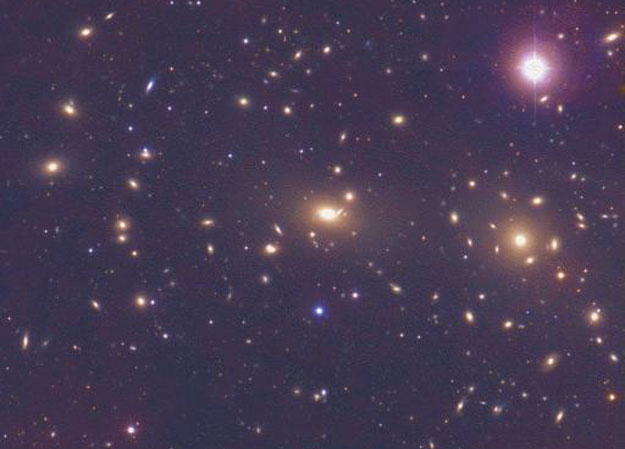 |
| The Hickson cluster is a very small compact one | 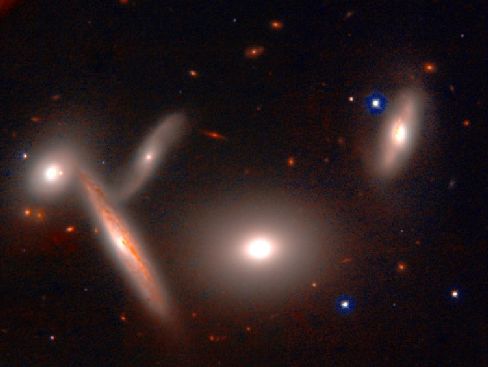 |
Doppler effect gives
z = λ-λ₀ = 1 - original wavelength
λ measured wavelength
Vel. of recession
v = zc = cδλ
λ₀
This formula isn't quite right: we can have z > 1: in fact the furthest known galaxy has z = 4.9. We have to use a relativistic formula in that case.
| Found in 1920's (Hubble, Humason, Slipher) that faint galaxies show a red shift: fainter the galaxy, faster the recession. |  |
| Hubble was able to measure distances to closer clusters and found that velocity ∝ distance | 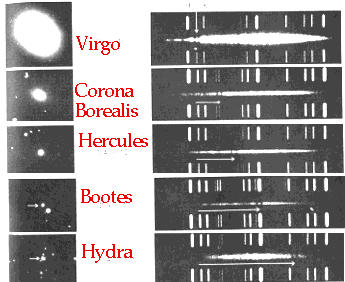 |
| v = H d H is Hubble constant: As measured by Hubble H = 550 km s-1/Mpc: Now we know H ~ 65 km s-1/Mpc : i.e. the average galaxy at 100 Mpc is receding at 6500 km/s |
 |
But this is only the beginning: We have measured the position of at least 10 million galaxies.......
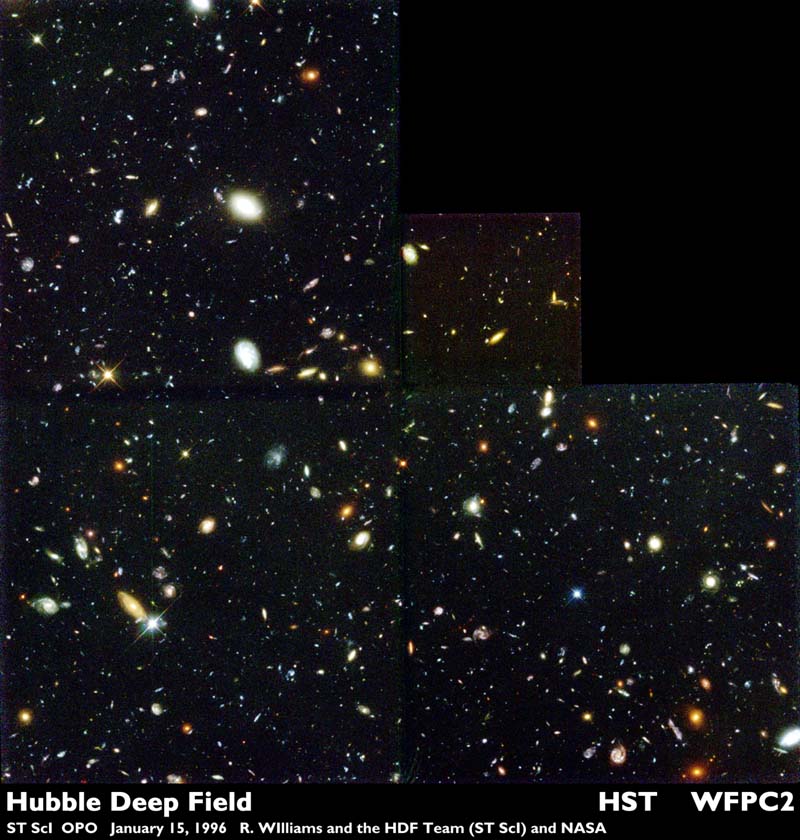 and we can go deeper
and we can go deeper
And further: this is a cluster of galaxies at a redshift of .5
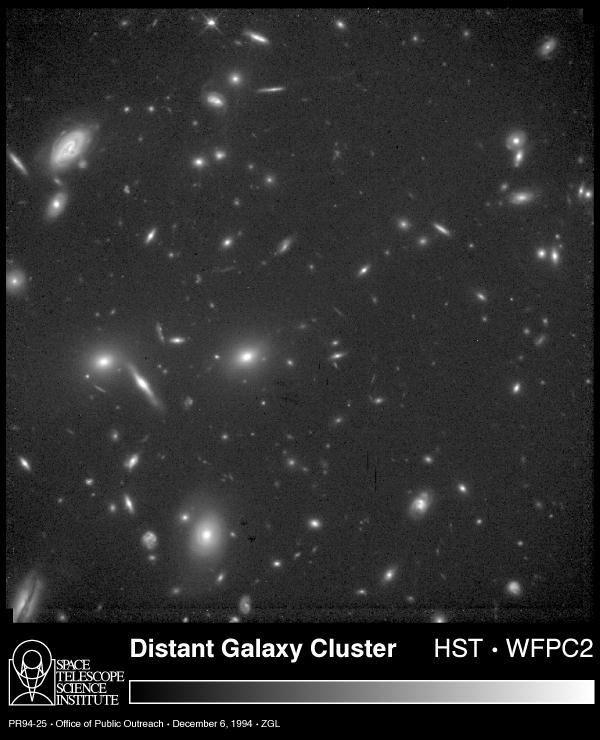
and further: this is a cluster of galaxies which is fairly close, but there the most distant galaxy known is buried in the picture
